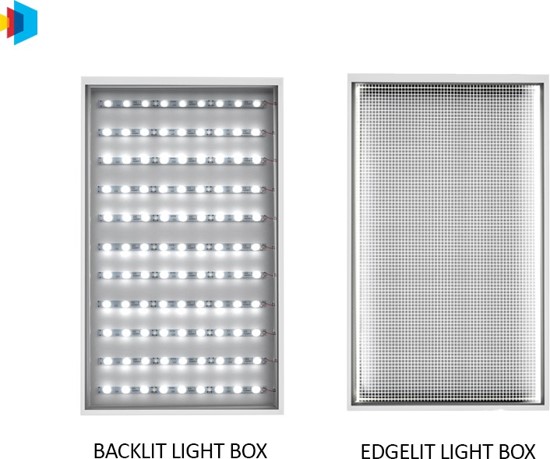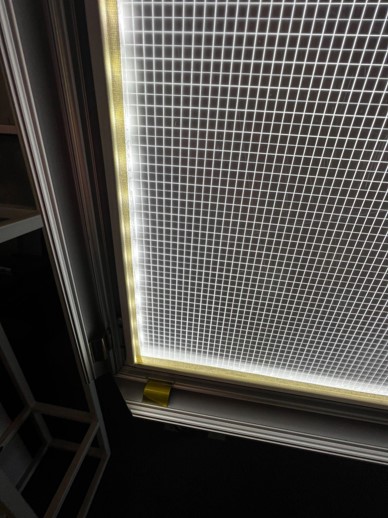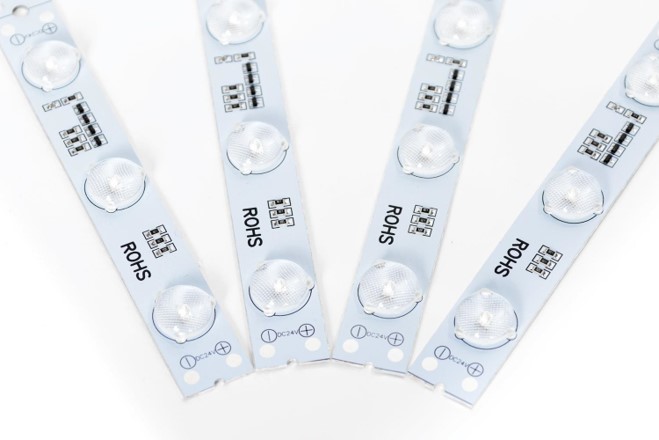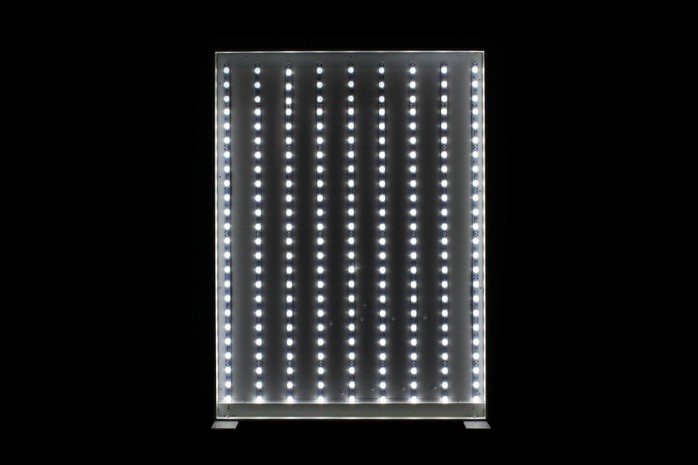There are two primary ways of creating light box displays; namely, edge lit picture frames and backlit boxes. That said, many people often wonder whether they should use backlit lighting boxes or edge lit picture frame boxes. Choosing between the two light boxes is more challenging than it seems. For one, there are numerous considerations you have to factor in when choosing which light box to go with. One such consideration is the mounting of your light box.
In this post, we’ll walk you through both options to help you make the right decision for your light box needs.

What Is an Edge Lit Light Box?
Edge lit light boxes (also known as perimeter illumination) have LED Light strips positioned inside the edges of the frame. These lights shine sideways, penetrating the translucent film behind your graphic. As such, these light boxes indirectly illuminate your message for your audience to view.

Edge lit light boxes are typically very thin. This is because the lights positioned on the side of the boxes make it possible to design an ultra-thin frame. Edgelit LED Light Boxes are usually more cost-effective light boxes, as they require fewer LED light strips for complete illumination. With this lighting approach, there may be a slight glow on the corners and sides of your display. However, some edge lit light boxes are made with a diffusion grid that is placed between the LEDs and the graphic. This will help the light circulate throughout the whole display, and avoid those dark spots and other types of lighting gaps.
How big your light is also affects the diffusion of light towards the frame. Keep in mind that the size of an edge lit light box determines how far the LED lights will be from the center. Larger boxes usually have bulbs further away from the center. As such, they tend to be dimmer.
What Is a Backlit Light Box?
Backlit light boxes are well-suited for large graphics illumination. This framing style is characterized by LED lights all over its entire back panel, facing toward the graphic image. This design allows backlit light boxes to be more visible and have an even distribution of light intensity across the entire frame.

One factor you should consider is that these light boxes require more bulbs compared to edge lit frames. Also, backlit light boxes don’t have the low profile build edge lit boxes have since they require more space behind the graphic (2-4 inches deep) for light diffusion purposes. Many people prefer backlit signs due to their ability to light up large format graphics in the most even, harmonious way.
How to Choose Between an Edge Lit Light Box and a Backlit Light Box
The main difference between an edge lit frame and a backlit light box is their mode of lighting. Edge lit picture frame light boxes use indirect lighting. They don’t consume a lot of energy and require minimum maintenance.
The Size of your Display
One of the top decisions in choosing your light box setup is the size of your display. Choosing the best light box for your display usually comes down to budget as well as size of your working surface, how strong the light needs to be and how you want the light to hit and showcase the graphics inside. All of these factors shape your display and how it will look when lit up. It is also important to note that we don’t recommend edge lit illumination for sizes beyond 72” W x 120” H. Beyond that size, they need to be backlighted.
The Brightness You Desire Your Graphic to Have
Suppose you want your graphics to have high brightness, then backlit light boxes are the perfect option. This is because the light that illuminates the graphics shines directly. Edge lit frame light boxes provide a standard level of brightness. As such, they may not be ideal in scenarios that require a lot of brightness.

The Level of Uniformity of Diffusion You Require
Uniformity of diffusion measures how uniform the intensity of your display is from different angles. In short, it assesses how even the lighting is. This is an important factor to consider, more so if your display will be positioned in a poorly lit place.
Backlit light boxes usually provide better uniformity than their counterpart—light is usually evenly distributed across the face of the graphic. This isn’t the case with edge lit frame boxes. With these light boxes, the lighting in your graphic design will become dimmer at the center with the increase in the size of the boxes.
The Amount of Cabinet Space You Have
If you’re looking for a sleek, flat look, the edge lit frame light boxes are the way to go. These light boxes transmit light sideways. As such, they can be less than 1-inch in depth.
However, if you have more cabinet space behind your graphic, then backlit light boxes will do. This is because these boxes require 2-4-inch space between the light bulb and the graphic to achieve uniform diffusion of light.
The Dollars You Are Willing to Invest
You also need to factor in financial implications when choosing between the light boxes. Backlit light boxes tend to be expensive since they require more LED bulbs to illuminate your graphic display, which consumes more energy.
Wrapping Up
Both types of light boxes are effective. The one you will go for will depend on your unique lighting needs and how much you are willing to invest. If you want to illuminate large graphics and have more brightness, then backlit light boxes are the most suitable displays. However, if you are looking for an effective yet economical and energy-efficient option, then an edge lit picture frame is a perfect choice.
Need a light box? DSA Signage is the go-to provider. We create top-notch LED visual display solutions that will meet your lighting needs for a long time. Contact us or start a conversation today to learn more about our products.
 DSA Signage
DSA Signage